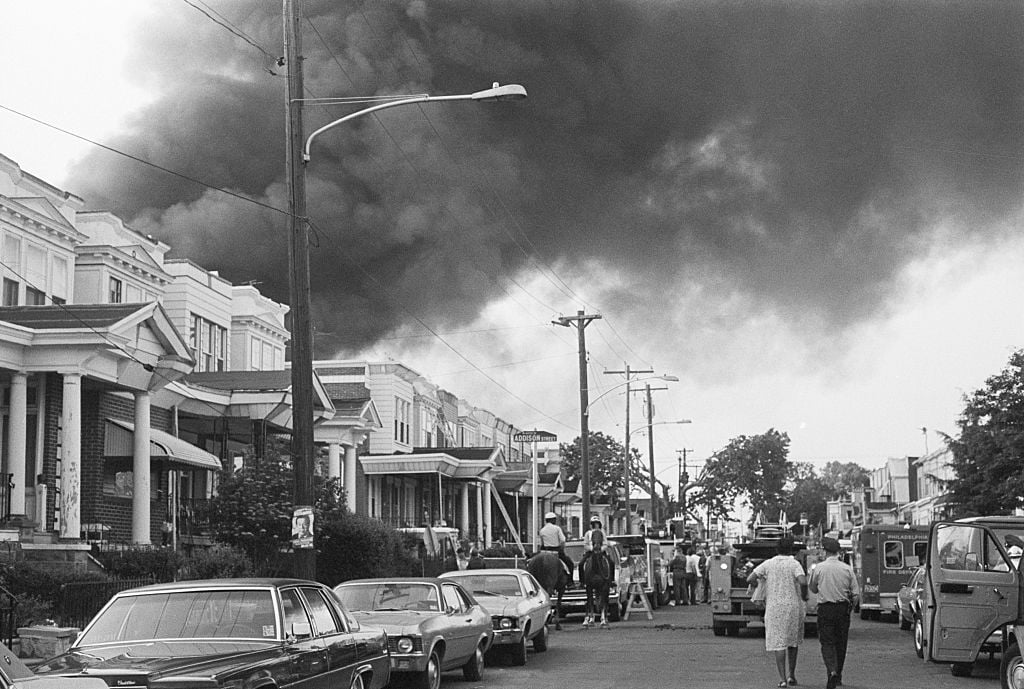
The University of Pennsylvania Museum of Archaeology and Anthropology is embroiled in a controversy over its possession of the remains of a teenage girl who was killed in 1985, when police bombed the home of a Black separatist leader in Philadelphia.
The remains, including parts of the girl’s pelvis and femur bones, are now believed to have come from Tree Africa, the daughter of MOVE founder John Africa, according to reports.
An op-ed published in The Philadelphia Inquirer pointed out that the museum housed the bones for 16 years after the incident, and again between 2016 and 2019, without attempting to return them to the family. The objects were also used as a case study in a recent online class, “Real Bones: Adventures in Forensic Anthropology,” taught by Penn Museum’s associate curator Janet Monge. (The course has since been removed.)
A spokesperson for the museum told Artnet News that the “identification is still inconclusive,” but noted in a statement that it understands “the importance of reuniting the remains with the family, and we are working now to find a respectful, consultative resolution.”
In a separate statement, Penn president Amy Gutmann and provost Wendell Pritchett added: “Simply said, this was insensitive, unprofessional and unacceptable.”
Unable to identify the person to whom the remains belonged after the MOVE bombing in 1985, the Philadelphia medical examiner transferred the two bones to Alan Mann, a Penn professor and curator at the museum, for assistance. The objects lived at the museum, under Mann’s care, until he took a job at Princeton University in 2001, when he took them with him.
The remains returned to the Penn Museum in 2016 when Monge—Mann’s former student—led a new effort to identify their owner. It was thought that the bones were then transferred back to Mann after Monge’s research.
However, Mann told the Inquirer last week that he has not seen them in more than a decade.
“I would’ve given them back years ago, if anyone had asked me,” the Princeton-based anthropologist told the paper. “There’s absolutely no reason for us to keep them. They should be given back.” (Mann did not immediately respond to a request for comment.)
Out of respect for the Africa family, the museum declined to comment on the current location of the remains. A source familiar with the situation confirmed that they are indeed accounted for.
Classifying MOVE as a terrorist organization, hundreds of Philadelphia police officers arrived outside the house of John Africa on May 13, 1985, demanding that various members of the group submit to arrest. After an armed standoff, the police dropped two bombs on the building and let the ensuing fires burn. Five children and six adults (including John Africa) were killed in the incident; dozens of nearby buildings were damaged or altogether destroyed.
This week, members of the Africa family held a press conference addressing the current controversy. “I could not imagine, in my worst nightmare, that the government would drop a bomb on us and kill my brothers and sisters,” said Mike Africa, Jr., a current member of MOVE, at the event. “And I could not have imagined 36 years later that they would be displaying parts of our family as if they’re some dinosaur relics that they dug up.” (The museum clarified that it did not actually display the bones.)
Members of MOVE have also launched an online petition that lists a number of demands, including the return of the remains to the Africa family. As of this press time, the document had 1,881 signatures.
Penn University says it has hired attorneys to “investigate how the remains came into the possession of the museum and what transpired with them for nearly four decades” and is currently working to return the remains to the family.